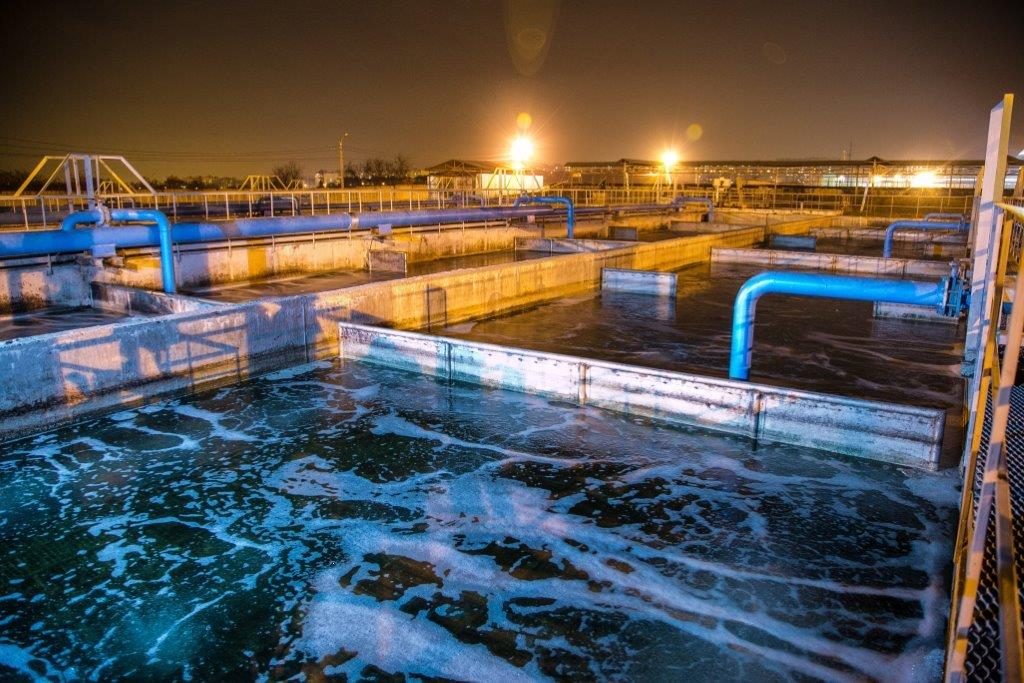Reliable Waste Water Treatment Equipments: Key Methods and Benefits
Reliable Waste Water Treatment Equipments: Key Methods and Benefits
Blog Article
Strategic Approaches to Boost Drainage Treatment Performance and Minimize Environmental Effect
In the world of waste water treatment, the pursuit for boosted effectiveness and decreased environmental effect is a perpetual obstacle that requires tactical solutions. The assimilation of sophisticated treatment modern technologies, energy-efficient processes, source healing strategies, boosted nutrient removal techniques, and clever tracking and control systems represents a complex structure for attending to these pressing problems.
Advanced Therapy Technologies
Sophisticated membrane filtering systems have actually changed advanced wastewater treatment processes, dramatically boosting the elimination of impurities. These ingenious systems operate by forcing water with a semi-permeable membrane, effectively separating pollutants from the water stream. The membrane layer's microscopic pores trap pollutants such as germs, infections, and put on hold solids, allowing only purified water to travel through. This technology has verified to be very efficient in getting rid of a large range of pollutants, consisting of drugs, hefty steels, and organic substances, which are typically testing to get rid of through traditional therapy approaches.
In addition, membrane layer purification systems supply various advantages over standard therapy techniques. They need less space, generate higher-quality effluent, and are more immune to variations in influent water high quality. Furthermore, these systems are very functional and can be conveniently incorporated into existing treatment plants or made use of as standalone systems for decentralized applications. As the need for tidy water proceeds to increase, the adoption of innovative membrane layer filtering technologies is vital to make certain efficient and lasting wastewater therapy practices.
Energy-Efficient Processes
The integration of energy-efficient procedures in wastewater therapy systems is critical for optimizing resource application and lowering functional costs. One essential technique to boosting power performance in wastewater therapy is the application of advanced aeration systems, such as fine bubble diffusers or surface aerators, which can enhance oxygen transfer effectiveness and minimize power consumption.
Moreover, maximizing procedure control and automation with making use of advanced sensing units and monitoring systems can enhance overall power efficiency by changing operations in real-time based on actual demand and problems. Applying power audits and routinely keeping an eye on energy performance indicators are vital methods to identify areas for improvement and track energy-saving efforts successfully. Generally, the adoption of energy-efficient processes in wastewater therapy not only profits the atmosphere however likewise adds to lasting price savings and operational sustainability.
Resource Healing Techniques
With a concentrate on enhancing resource use and sustainability in wastewater therapy systems, the application of resource recovery approaches arises as a critical facet in improving operational efficiency. Source healing methods in wastewater treatment entail the identification and extraction of useful resources from the waste stream, thus transforming what was when thought about waste right into a beneficial possession. By implementing source recovery strategies such as nutrient removal and recovery, power generation from organic issue, and the production of multiple-use water, wastewater therapy plants can decrease environmental influence while making the most of performance.

Improved Nutrient Elimination Techniques
Implementing advanced nutrient elimination methods is crucial for optimizing the effectiveness of wastewater therapy systems. Boosted nutrient elimination plays a critical duty in lessening the environmental impact of cured effluent discharged into water bodies. Among the crucial techniques made use of for improved nutrient removal is the procedure of biological nutrient elimination (BNR), which involves the elimination of nitrogen and phosphorus through organic procedures. This can be accomplished via the usage of specialized bacteria that can convert nitrogen compounds into inert nitrogen gas through denitrification, and gather phosphorus within their cells via a process called enhanced biological phosphorus elimination (EBPR)

In enhancement to BNR, advanced therapy methods such as membrane bioreactors (MBRs) and created marshes can also be employed to boost nutrient elimination performance. By incorporating these sophisticated nutrient removal strategies right into wastewater treatment markets, systems and communities can properly decrease nutrient air pollution and safeguard the environment.
Smart Tracking and Control Systems
Utilizing innovative innovation, the combination of clever tracking and control systems reinvents the functional performance of wastewater therapy centers. These systems integrate innovative sensors and data analytics to constantly monitor vital specifications such as pH levels, turbidity, dissolved oxygen, and circulation prices in real-time. By accumulating and assessing this data, drivers can obtain important understandings into the efficiency of the therapy processes, allowing aggressive adjustments to enhance treatment efficiency.
Smart tracking and control systems likewise support remote tracking capabilities, enabling operators to accessibility real-time data and control functions from off-site areas. This remote availability improves operational versatility and responsiveness, making it possible for speedy treatments in case of system breakdowns or variations in influent high quality. The predictive maintenance abilities of these systems help avoid devices failings and reduce downtime, eventually improving the total reliability of wastewater treatment procedures.
Final Thought
In conclusion, calculated techniques such as advanced treatment innovations, energy-efficient processes, source recovery approaches, boosted try this out nutrient removal methods, and wise surveillance and control systems play a crucial role in enhancing wastewater therapy effectiveness and lessening environmental influence. By executing these methods, wastewater treatment plants can improve their general performance, minimize energy consumption, recoup beneficial resources, and guarantee compliance with ecological guidelines. These strategies are essential for lasting and efficient wastewater administration techniques.

In verdict, calculated techniques such as sophisticated therapy innovations, energy-efficient processes, resource recovery techniques, enhanced nutrient removal techniques, and wise monitoring and control systems play a critical role in enhancing wastewater therapy efficiency and decreasing environmental effect.
Report this page